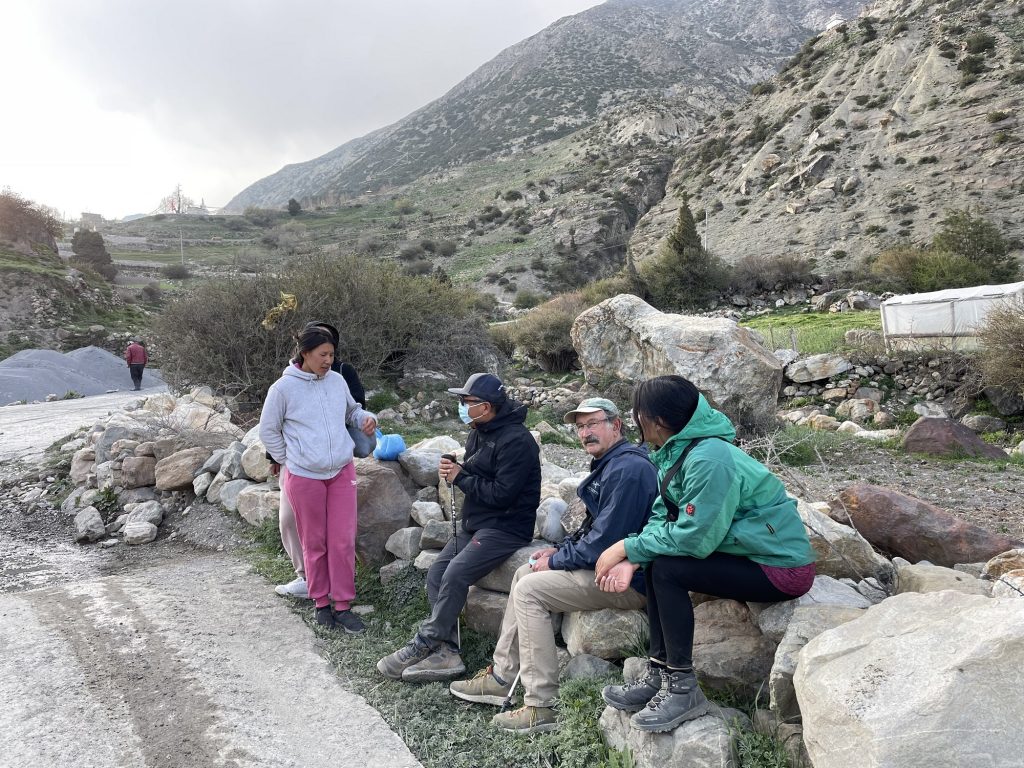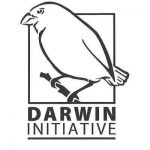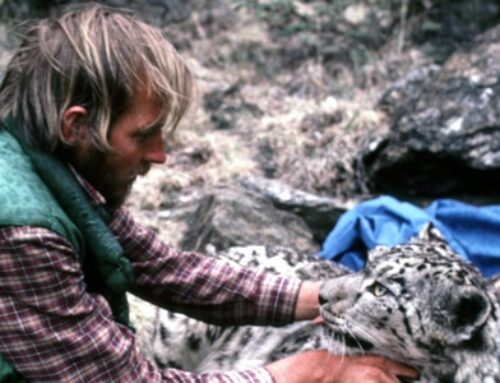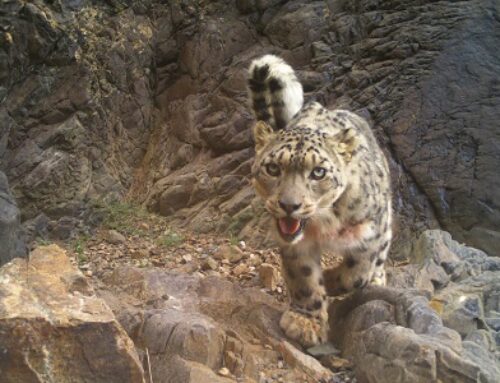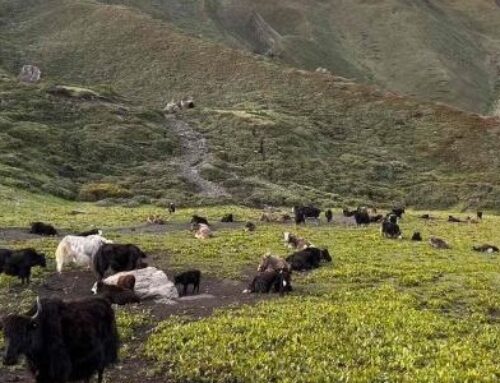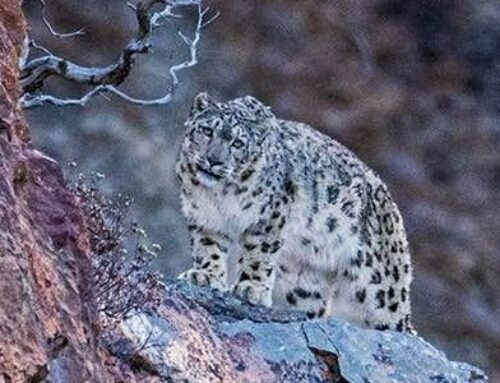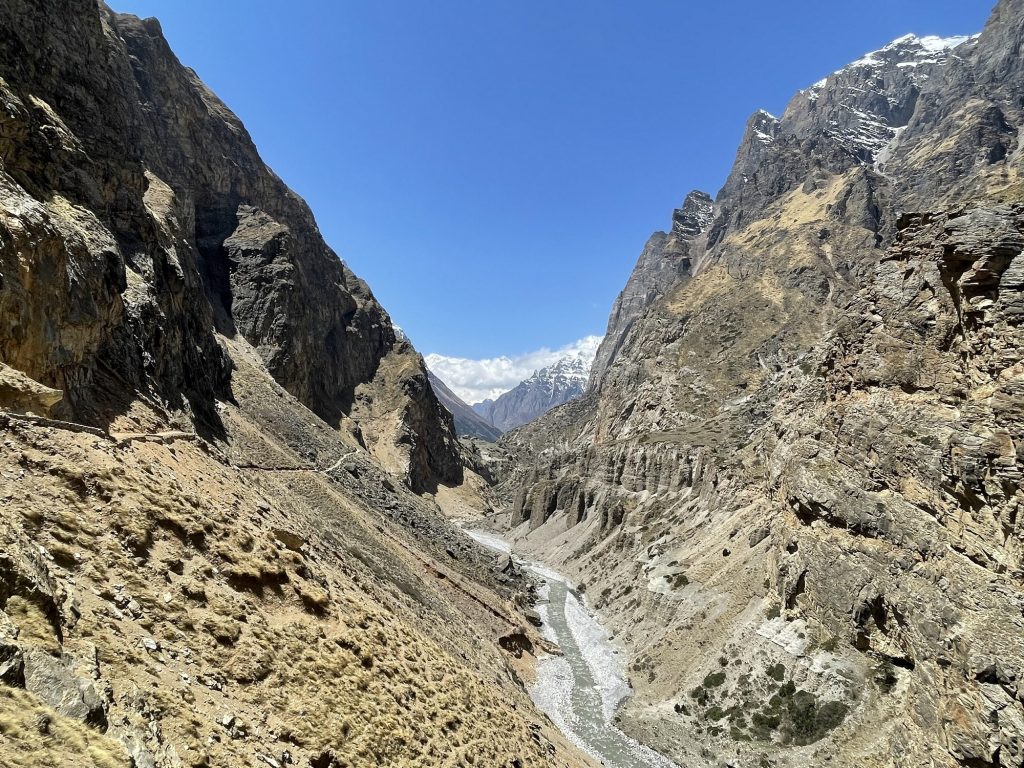
Looking south from the Pho Valley. This valley contains some of Nepal’s best snow leopard habitat. A precipitous trail can be seen on the left.
It is a great pleasure to announce that Snow Leopard Conservancy (SLC) was selected for support from Great Britain’s highly competitive Darwin Initiative Fund. The two-year snow leopard conservation project based in Nepal, entitled “Integrating local government and community conservation capacities for snow leopards,” began April 1, 2023 and will proceed through March 31, 2025. Darwin has funded GBP 170,660, or approximately $200,000 USD, for community-focused conservation activities in three rural municipalities (roughly the size of a US county) in Central Nepal, in front and in the rain shadow of Mount Annapurna, the 10th highest mountain in the world. These sites were based on priorities, SLC’s experience, and trust gained through past programs in this snow leopard hotspot.
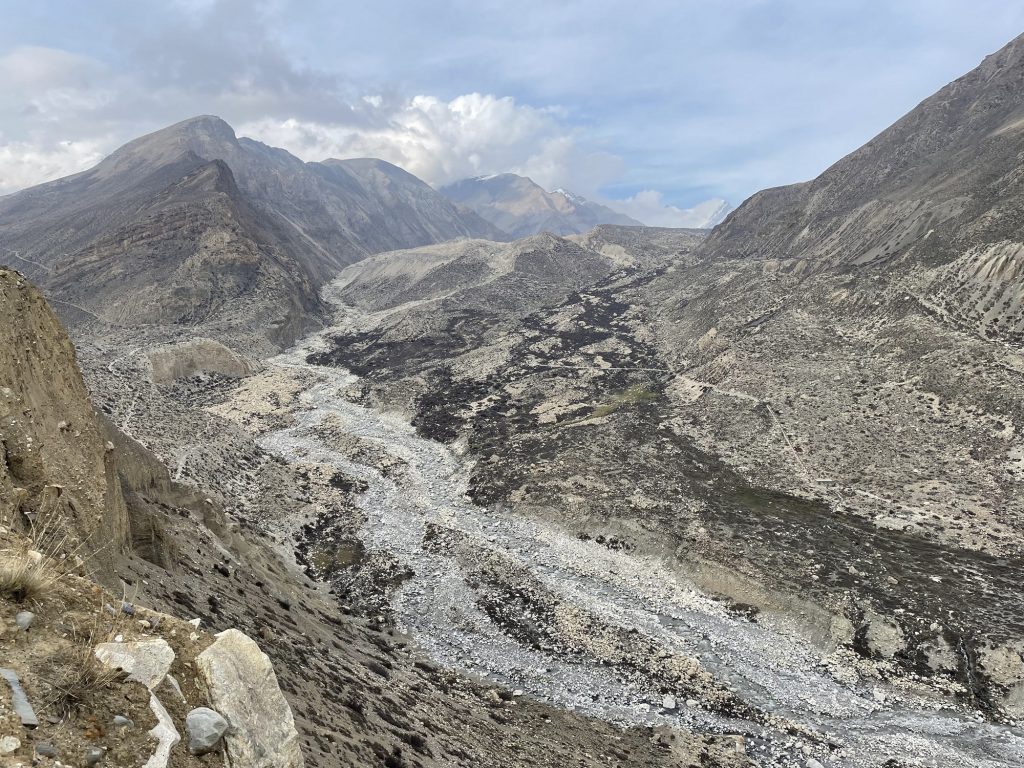
The route to Tibet from Pho Village. Two days before this photograph was taken, a snow leopard was seen in the grassy areas in the center of the photo.
The project aims to take successful community-based conservation activities to the next level and encourage cooperation, coordination, and common problem solving across the municipalities that include some of the finest snow leopard habitat globally. All the activities will be conducted at scales mimicking home ranges of snow leopards. While SLC has successfully developed and implemented highly localized snow leopard conservation activities at the village level, these successes need to be replicated across nearby snow leopard habitat. Transferring proven conservation interventions and practices over the entire landscape and across rural municipal boundaries is imperative for individual snow leopards to be able to move freely between these areas. This project aims to address this deficiency.

Braga Monastery is seen among cliffs that are excellent snow leopard habitat.
The project has three major interlocking objectives: the first involves strengthening and replicating livelihood enterprises across administrative boundaries so adjacent municipalities are cooperating rather than competing with one another. Cooperatives or other business mechanisms will be formed to operate regionally and provide a common marketing and branding strategy. The prospect of increased potential enterprise revenues is expected to provide additional economic benefit for herders who experience loss of livestock to predators like the snow leopard. The first enterprise concentrates on bringing the successful Himalayan chives cultivation project from Nar and Phu villages to villages in the adjacent Manang rural municipality.
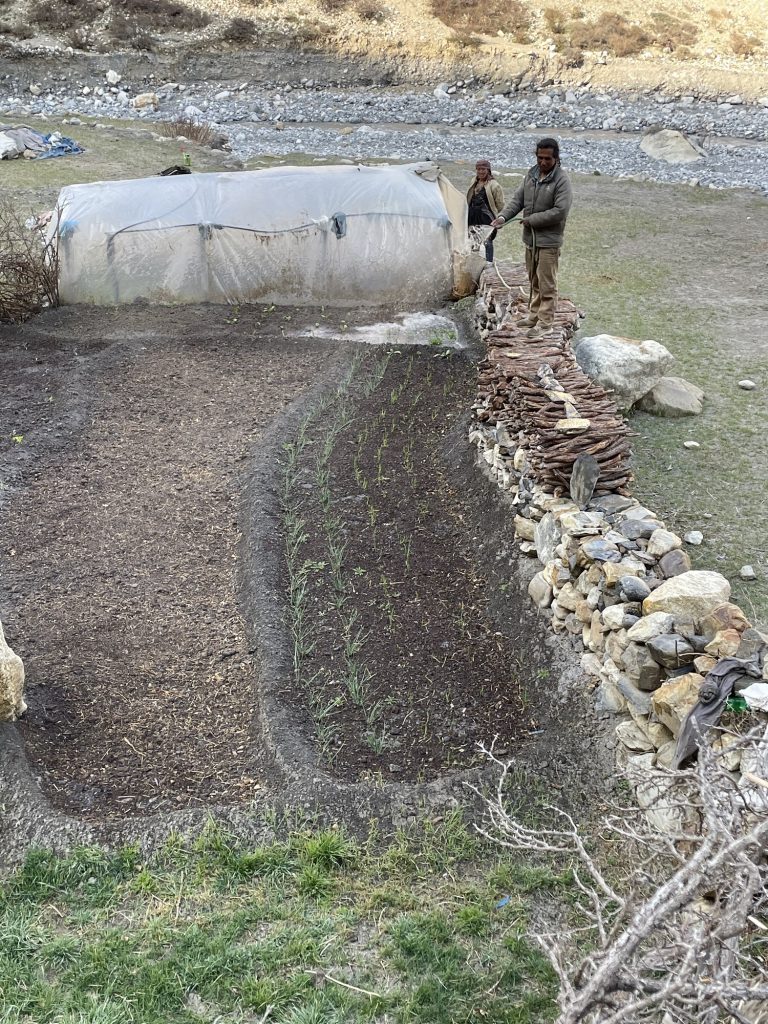
Preparing and watering high value Himalayan chives for transplanting. Chives are being grown as an income replacement following livestock losses from snow leopard depredation.
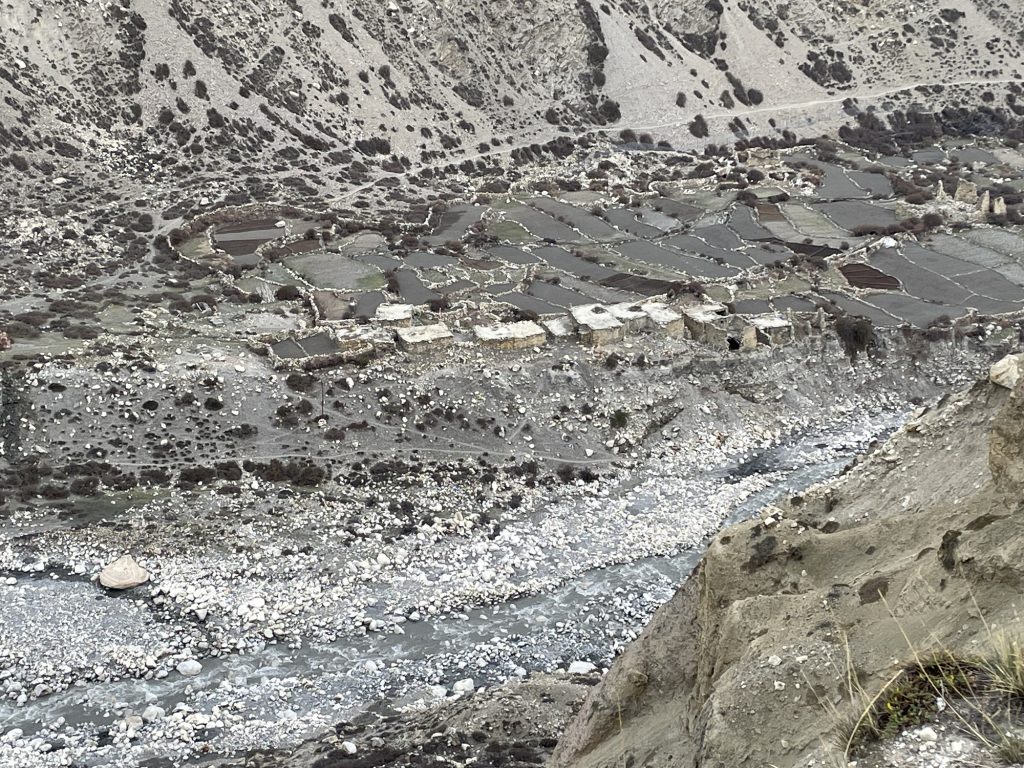
Herders’ corrals are seen in the center of the photo. The unimproved corral on the left was the location of a depredation incident where a snow leopard killed more than 100 sheep. By predator proofing corrals with roofs and doors and installing solar-powered electric fencing or Foxlights nighttime predator deterrents, depredation occurrences can be prevented.
The second objective will be to streamline and localize the processing of compensation claims for livestock lost due to snow leopard depredation. The current system is managed by the Central (Federal) government and the current verification and validation methods for processing claims are not effective in remote mountain environments. The long delays in processing claims and undervaluing of individual livestock generate significant tension and conflict between local government and herders. Nepal’s Constitution of 2018 grants local authorities the power and authority to manage local compensation plans and the right to request Central Government funds for creating compensation accounts, but these powers have not been assumed by local authorities.
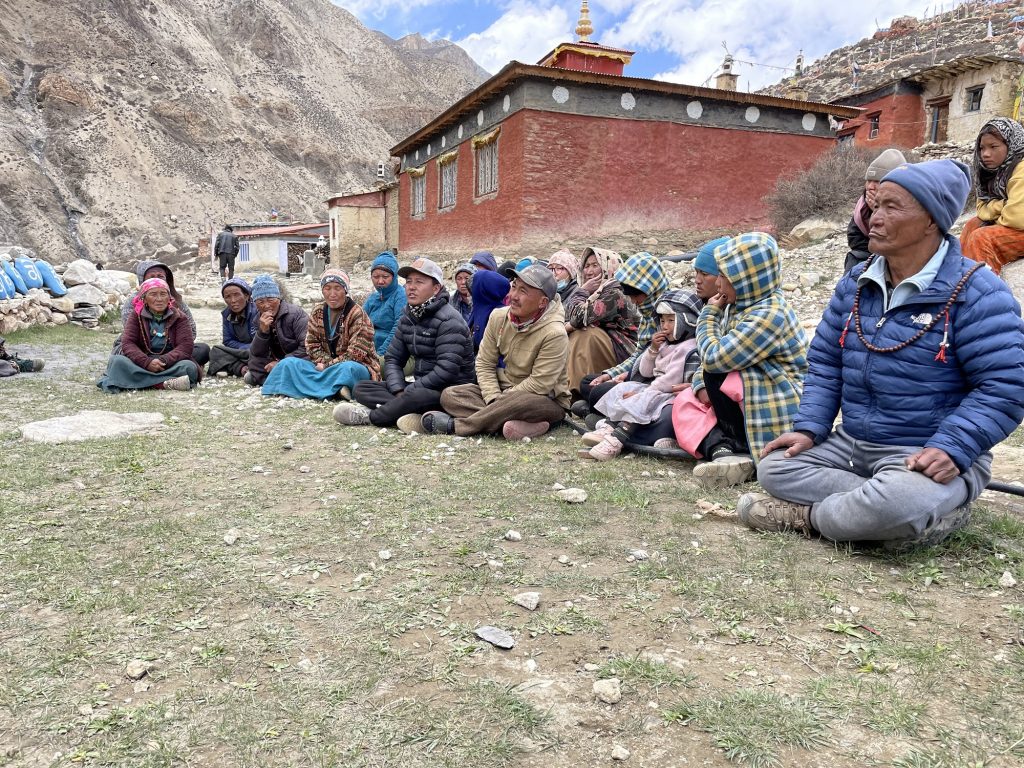
Village meeting with herders at Pho Village. A good snow leopard habitat can be seen in the background.
The final component of the project is to create a local herders’ cooperative or similar structure to help them produce and market livestock-based products, while providing a common forum for delivering improved livestock and veterinary health services. This component will complement the One Health Initiative that SLC and partners International Veterinary Outreach (IVO) and San Francisco Zoological Society started during the first Darwin Initiative Project (2018-2022). The next phase of the One Health Initiative will occur this year, led by SLC and IVO in collaboration with Nepali veterinary institutional partners to bring vital veterinary and public health measures to the under-resourced remote herder communities in the high mountains of Annapurna. It will also provide a coordinated platform for testing and designing more effective corrals and herding management practices that can be applied in Annapurna and elsewhere.
